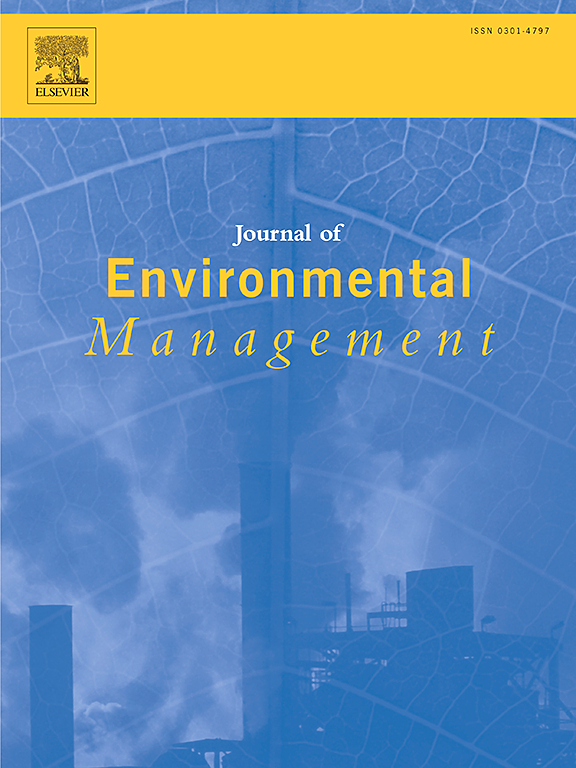Minimum sampling density determines soil bacterial diversity through ecosystem multifunctionality in a typical steppe
IF 8
2区 环境科学与生态学
Q1 ENVIRONMENTAL SCIENCES
引用次数: 0
Abstract
Ensuring an appropriate sampling density will accurately reflect the ecosystem condition. However, the knowledge gap of the minimum sampling density limits our deeper comprehension of the significance of ecosystem multifunctionality in maintaining soil bacterial diversity. We established a long-term grazing trial in a typical steppe since 2001 and have now formed a stable heterogeneous environment. Based on this, we conducted a full-factorial sampling density experiment in 2024. By analyzing 4016 sample combinations, we quantified the characteristics of bacterial communities (structure, function, and diversity), biotic factors (plant diversity, aboveground biomass, as well as the total carbon, nitrogen, and phosphorus contents in plants), and abiotic factors (organic carbon, total nitrogen, total phosphorus, nitrate, ammonium, and available phosphorus contents in soil). Using inflection points of exponential decay curves of the coefficient of variation of sampling density, we determined the minimum sampling density for each indicator. Our findings reveal that asynchronous responses result in differences in minimum sampling densities among different indicators. Although the minimum sampling density for bacterial richness was 0.76 m2 ha−1, multi-dimensional trade-offs suggest that a range of 1.0–1.3 m2 ha−1 is suitable for the typical steppe. Path analysis shows that sampling density primarily regulates bacterial diversity through the direct positive effect of bacterial community composition and the indirect negative effects of biotic factors. It is crucial to establish a causal relationship between determining the minimum sampling density, constraining maximum multifunctionality, and assessing stable species diversity. This will prevent biodiversity misestimation and reverse biodiversity loss.
最小采样密度通过生态系统的多功能性决定了典型草原土壤细菌多样性
确保适当的采样密度能准确反映生态系统状况。然而,最小采样密度的知识差距限制了我们对生态系统多功能性在维持土壤细菌多样性中的意义的深入理解。从2001年开始,我们在典型草原上建立了长期放牧试验,目前已经形成了稳定的异质性环境。基于此,我们于2024年进行了全因子抽样密度实验。通过对4016个样品组合的分析,我们量化了细菌群落(结构、功能和多样性)、生物因子(植物多样性、地上生物量、植物全碳、全氮、全磷含量)和非生物因子(土壤有机碳、全氮、全磷、硝态氮、铵态氮和速效磷含量)的特征。利用抽样密度变异系数指数衰减曲线的拐点,确定了各指标的最小抽样密度。我们的研究结果表明,异步响应导致不同指标之间最小采样密度的差异。虽然细菌丰富度的最小采样密度为0.76 m2 ha - 1,但多维权衡表明,1.0-1.3 m2 ha - 1范围适合典型草原。通径分析表明,采样密度主要通过细菌群落组成的直接积极作用和生物因子的间接消极作用来调节细菌多样性。确定最小采样密度、约束最大多功能性和评估稳定物种多样性之间的因果关系至关重要。这将防止对生物多样性的错误估计并扭转生物多样性的丧失。
本文章由计算机程序翻译,如有差异,请以英文原文为准。
求助全文
约1分钟内获得全文
求助全文
来源期刊

Journal of Environmental Management
环境科学-环境科学
CiteScore
13.70
自引率
5.70%
发文量
2477
审稿时长
84 days
期刊介绍:
The Journal of Environmental Management is a journal for the publication of peer reviewed, original research for all aspects of management and the managed use of the environment, both natural and man-made.Critical review articles are also welcome; submission of these is strongly encouraged.
 求助内容:
求助内容: 应助结果提醒方式:
应助结果提醒方式:


